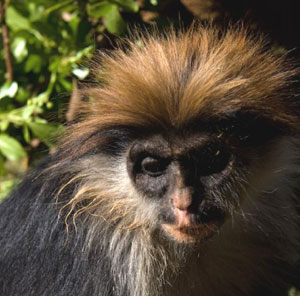|
|
Bushmeat hunting constitutes the most immediate threat to wildlife populations in the Udzungwa Mountains of the Eastern Afromontane biodiversity hotspot in Tanzania. A new study, published in Tropical Conservation Science assesses the impact of hunting by comparing densities of mammalian species between the little hunted West Kilombero Scarp Forest Reserve, the medium-hunted Udzungwa Scarp Forest Reserve and the intensively hunted New Dabaga Ulangambi Forest Reserve.
Conducting surveys of these conservation areas for the 22 species of mammal known to inhabit the region, Elmer Topp-Jørgensen and colleagues recorded 20 species in West Kilombero Scarp Forest Reserve, 17 in Udzungwa Scarp Forest Reserve, and 12 in New Dabaga Ulangambi Forest Reserve. They found large species — larger than 40 kg (90 pounds) — to be the most affected. Hunting had little effect on primates, blue duiker, Harvey’s duiker, aardvark, eastern tree hyrax, and giant pouched rat in Udzungwa Scarp Forest Reserve.
 Udzungwa red colobus (Procolobus gordonorum) endemic to the Udzungwa Mountains. Photo by M.R. Nielsen taken. |
“The effect of hunting appears to be proportional to the size of the species and the intensity of hunting,” write the authors. “Reductions of hunting levels are paramount to the survival of large bodied species in Udzungwa Scarp Forest Reserve and for the continued presence of most species in New Dabaga Ulangambi Forest Reserve.”
Encouragingly, after the data collection for the study, the Tanzanian government, together with local communities, launched a forest management program involving patrolling and monitoring of
biodiversity and forest quality. The authors say their data establishes a baseline for evaluating the effectiveness of the conservation program as well as establishment of the new Kilombero Nature Reserve.
Topp-Jørgensen, E., Nielsen, M. R., Marshall, A. and Pedersen, U. 2009. Mammalian density in response to different levels of bushmeat hunting in the Udzungwa Mountains, Tanzania. Tropical Conservation Science Vol. 2 (1):70-87.